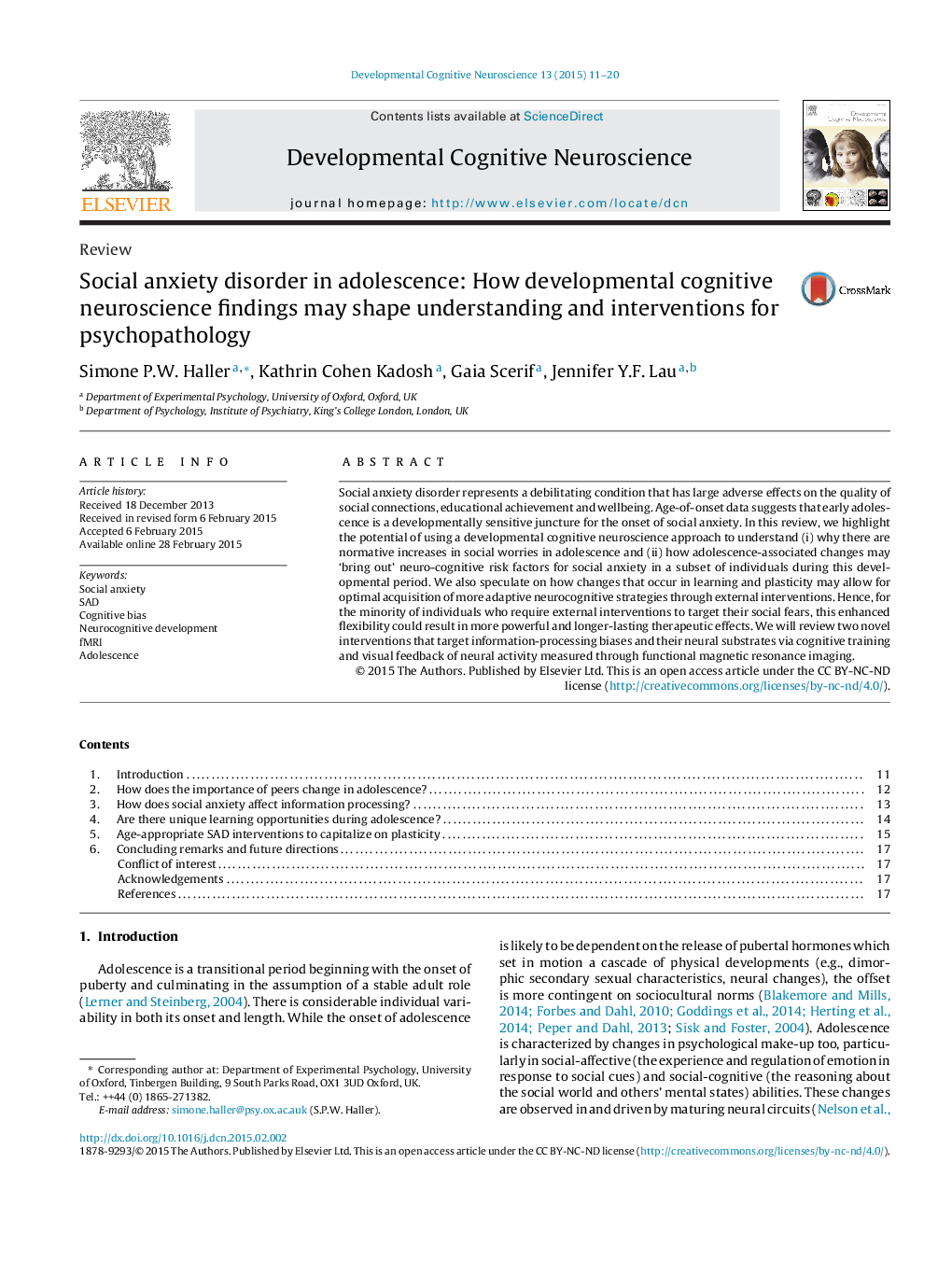| Article ID | Journal | Published Year | Pages | File Type |
|---|---|---|---|---|
| 4316460 | Developmental Cognitive Neuroscience | 2015 | 10 Pages |
•Late childhood and adolescence are a sensitive juncture for social anxiety onset.•Cognitive biases linked to social anxiety manifest in differences in functional brain response.•Normative socio-affective developments may exacerbate biased processing.•Increased plasticity/learning may make adolescence an ideal time to intervene.•Modifying processing biases through cognitive training and neurofeedback represent two possible age-appropriate interventions.
ABSTRACTSocial anxiety disorder represents a debilitating condition that has large adverse effects on the quality of social connections, educational achievement and wellbeing. Age-of-onset data suggests that early adolescence is a developmentally sensitive juncture for the onset of social anxiety. In this review, we highlight the potential of using a developmental cognitive neuroscience approach to understand (i) why there are normative increases in social worries in adolescence and (ii) how adolescence-associated changes may ‘bring out’ neuro-cognitive risk factors for social anxiety in a subset of individuals during this developmental period. We also speculate on how changes that occur in learning and plasticity may allow for optimal acquisition of more adaptive neurocognitive strategies through external interventions. Hence, for the minority of individuals who require external interventions to target their social fears, this enhanced flexibility could result in more powerful and longer-lasting therapeutic effects. We will review two novel interventions that target information-processing biases and their neural substrates via cognitive training and visual feedback of neural activity measured through functional magnetic resonance imaging.
